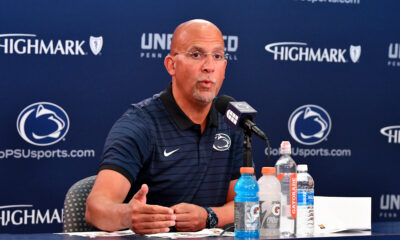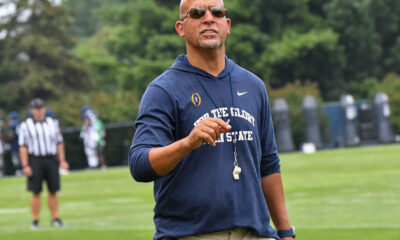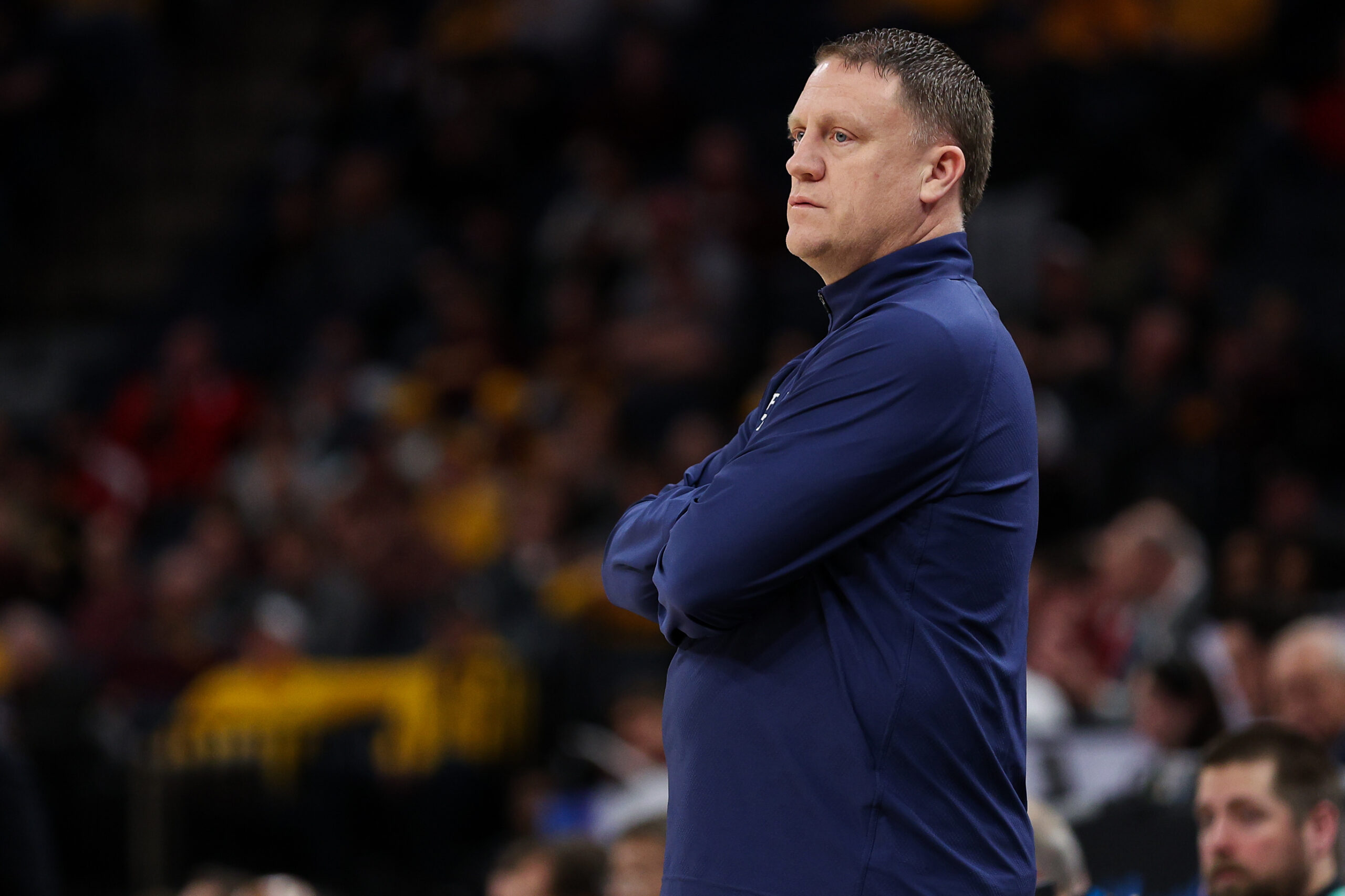As Penn State basketball looks to start a new era under head coach Mike Rhoades, the landscape of college athletics is undergoing a seismic change, unlike anything we’ve seen since the Southwest Conference broke up in 1996. The PAC 12 dissolves this summer after not being able to get a new television deal. Next month, the Big Ten will add USC, UCLA, Oregon, and Washington. The Big 12 will absorb Utah, Colorado, Arizona, and Arizona State.
The football landscape has shifted towards a Power Two, with the Big Ten and SEC leading the way in television revenue and national brands. Yet, in college basketball, the landscape remains a little bit more balanced. The Big East is still one of the premier conferences, despite not having football, and the Big 12 has strengthened itself by adding traditional West Coast basketball powerhouse Arizona to the conference.
Year one under Mike Rhoades in 2023-24 had its ups and downs, with the Nittany Lions pulling off some incredible upsets, such as over Illinois at Rec Hall, but also suffering some painful defeats.
Will the new teams entering the Big Ten help or hurt Penn State basketball moving forward?
Expansion can help bring national attention
Adding better teams to the conference will always have some benefits. Having massive brands like UCLA, Oregon, USC, and Washington play games at the Bryce Jordan Center will not only draw better crowds but also the attention of national audiences. If the Nittany Lions can beat a blue blood like UCLA, it can energize the fanbase and help with recruiting.
Mike Rhoades is trying to build a program to compete year in and year out for an NCAA Tournament bid. To do that, you need to have a strong strength of schedule. The Big Ten adding better teams should only help when looking at the different metrics like KenPom and the NET at the end of the season.
But it could also bury the Nittany Lions
However, the drawbacks to the Big Ten expansion seem to outweigh the positives.
Penn State basketball has already found itself among the bottom dwellers in the conference since joining in the 1990s. Adding four more teams, all of whom have more historical success than the Nittany Lions, will certainly not help.
Add in the fact that the Big Ten will only now invite 15 out of 18 teams to the conference tournament, and the pressure to perform ramps up even more. That isn’t to say that a team ranked in the 16-18 range would have made the NCAA Tournament, but that possibility is eliminated with the conference not allowing everyone to participate.
If we look back at the historical records of Penn State basketball, there is a good chance for the team to finish in those bottom three spots more often than not. Mike Rhoades had a decent first season, but the team still played on day one of the Big Ten Tournament as the 11 seed in a 14-team bracket.
In an 18-team super conference, the Nittany Lions must ensure they don’t get lost in the shuffle, which is a real possibility given the added depth the conference has taken on.
Penn State basketball could help the rest of the athletic department

Mandatory Credit: Matthew O’Haren-USA TODAY Sports
Penn State will never be a premier basketball brand like UCLA, Indiana, Purdue, or Michigan State. However, the Nittany Lions have the potential to consistently be an NCAA Tournament team with resources and support.
We have already seen athletic director Pat Kraft’s support of the basketball program through hiring Mike Rhoades out of VCU and the promotion of NIL to help get better players in recruiting and the transfer portal.
There has never been a good reason why Penn State basketball can’t be as competitive as plenty of other sports on campus. It is already the only other sport with a net positive regarding revenue within the athletic department. Outside of the occasional years from men’s ice hockey or wrestling, basketball is the only option besides football to help supplement the non-revenue sports.
That is another reason why getting the program to a competitive level that would promote donations, season ticket sales, and sponsorships is important. Rhoades getting the team to a more nationally relevant standard can have a trickle-down benefit for every other Nittany Lions athletic program.
This upcoming season will be a big one for Rhoades as he returns many contributors from the 2023-24 roster and brings in solid blue-chip players from his first recruiting class at Penn State. The Nittany Lions should be expected to be in contention for the NCAA Tournament bubble and be competitive within the Big Ten.
This will be a massive opportunity to continue to build excitement and grow the Penn State basketball brand. Maybe one day, the Bryce Jordan Center can finally get rid of that black curtain for the upper deck.
Thank you for reading Basic Blues Nation! Please follow us on all of our social channels (Facebook, Twitter, Instagram, LinkedIn, and YouTube) and subscribe to our newsletter for the latest news and insights on your favorite Penn State athletics. For feedback, questions, concerns, or to apply for a writing position, please email us at basicbluesnation@gmail.com or direct message us on our social media.

 FOOTBALL3 days ago
FOOTBALL3 days ago
 FOOTBALL2 days ago
FOOTBALL2 days ago
 FOOTBALL1 day ago
FOOTBALL1 day ago
 FOOTBALL4 hours ago
FOOTBALL4 hours ago









